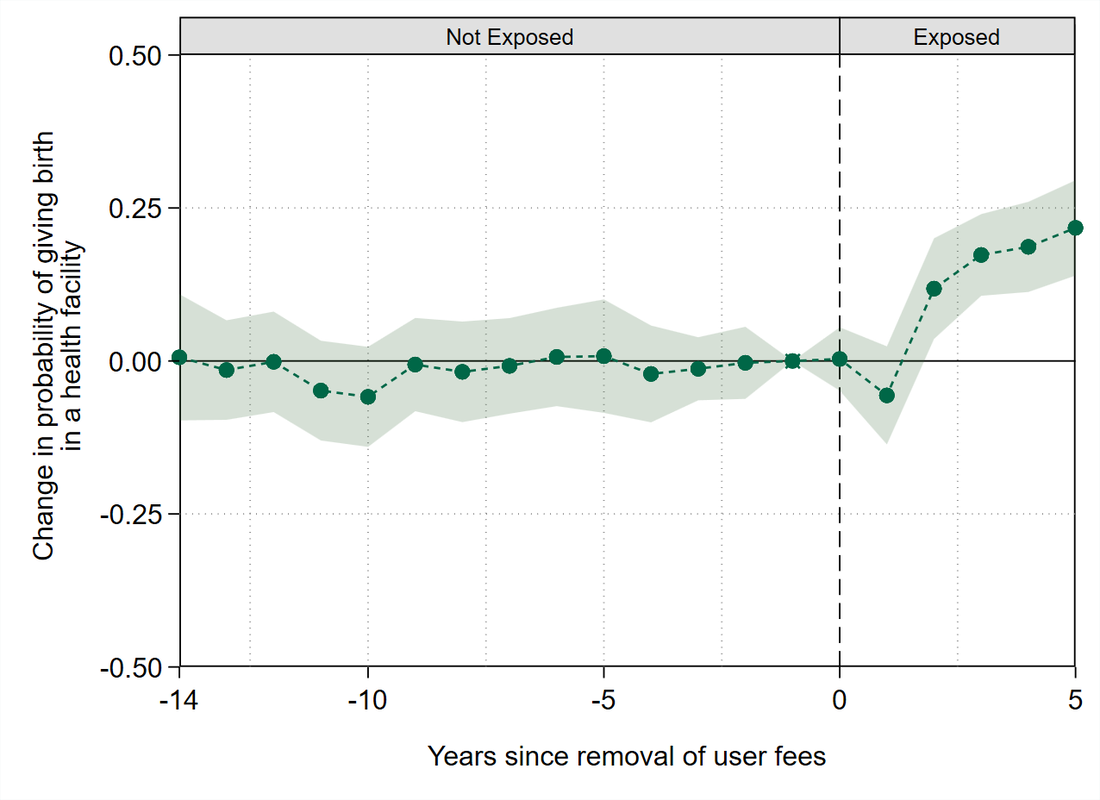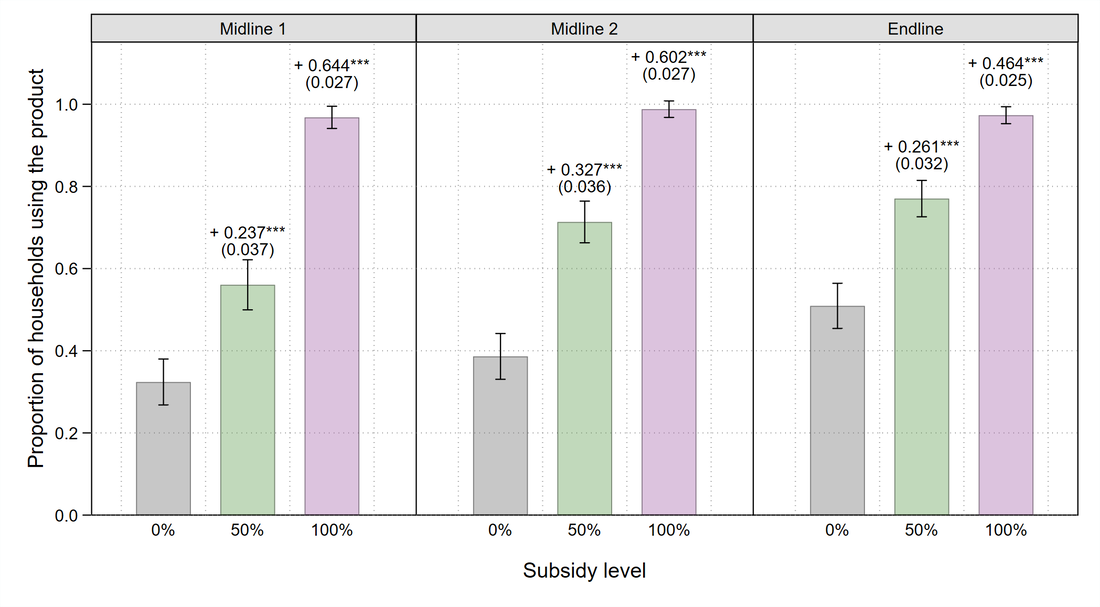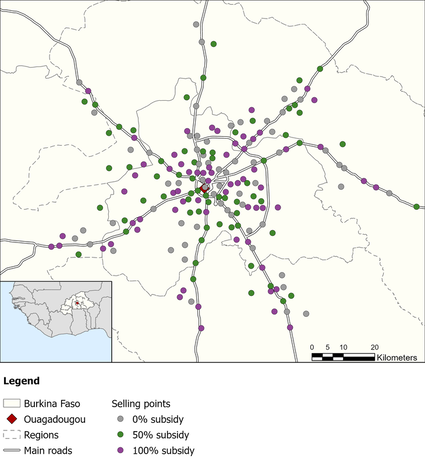Welcome to my website!I am an applied economist broadly interested in answering to policy-relevant questions with potentially large real-life implications using microeconometric methods. I am currently an Assistant Professor at the Department of Economics of the University of Orléans. My research covers topics in applied microeconomics at the intersection of health and development economics. It explores several issues such as access to healthcare, determinants of human capital formation, as well as the health and economic consequences of the construction of infrastructures. My Job Market Paper examines the causal effect of exposure to water reservoirs on individual health in 34 Sub-Saharan African countries and then scrutinizes several channels through which proximity to a dam might affect the local health and economic conditions. I am especially interested in the evaluation of public policies and in the investigation of their unintended effects on populations. I also particularly enjoy working with geospatial data and applying Geographic Information System (GIS) techniques in economics. Feel free to get in touch if you would like to work with me on such a project! I earned a MPhil. in Economics (Valedictorian) in 2018 and completed my PhD. in Economics at the Université Paris Dauphine - PSL in October 2022. I received the 2023 special mention for the Best PhD. Prize from the French Economic Association, and the Best Doctoral Dissertation Award in Economics from the Sorbonne - Chancellerie des Universités de Paris. |
Research
Publications
|
■ Price and adoption of a new technology to fight malaria in Burkina Faso, with Elodie Djemaï
Revue d'économie du développement, vol. 35, October 2023 Using survey data covering approximately 3,000 households followed during a full rainy season in Burkina Faso, this study examines the effect of a subsidy on the demand for malaria prevention. We use a randomized controlled trial (RCT) that varies the financial incentive for access to a novel preventive technology: a mosquito-repellent moisturizing lotion. We show that demand responds strongly to a price reduction of 50 to 100%, confirming previous studies on mosquito nets (conventional or insecticide-impregnated) and therefore on a prevention method that does not require repeated purchase. If the increase in demand enabled by the subsidy encourages demand once the subsidy has ended, this may have important repercussions in the fight against malaria in Burkina Faso, and potentially in other West African countries sharing certain characteristics. |
|
■ Mothers and Fathers: Education, Co-residence, and Child Health, with Elodie Djemaï and Anne-Laure Samson
Journal of Population Economics, vol. 36, October 2023 [Working Paper: PDF, January 2022] We use four waves of Demographic and Health Surveys from Zimbabwe to evaluate the effect of mother’s and father’s education on child health outcomes. We identify causal effects using the 1980 education reform. A simultaneous-equation model is estimated to take into account possible selection and endogeneity biases. Our results suggest some specialization within parents, as mothers and fathers do not affect the same health outcomes of their under-5 children. Fathers matter more than mothers, and mother’s education improves health only when she is matched to a low-educated man. There is selection in our sample, as is usual. The inverse Mills ratio capturing the likelihood of living with one’s father or mother significantly affects child health. Last, parental educational sorting is shown to be important, so that estimation that does not take both mother’s and father’s education into account will produce biased results. |
|
■ From Fees to Free: User Fee Removal, Maternal Health Care Utilization and Child Health in Zambia,
World Development, vol. 156, August 2022 [Working Paper: PDF, February 2022] Despite recent progress, about 295,000 women in the World still die each year from pregnancy-related causes, and about 4.1 million children die before reaching the age of one. 99% of these deaths occur in developing countries. In 2006 the Zambian government removed user fees in public and mission health facilities in 54 out of 72 districts, and then extended this policy to rural parts of unaffected districts in 2007. I exploit the staggered implementation of the policy to assess its impact on maternal health care utilization and child health outcomes. Using a difference-in-differences estimation strategy, I find a 43% increase in the probability to give birth in a medical facility following the removal and a 36% increase in the probability of being assisted by a skilled birth attendant during childbirth. These positive effects decrease with household's distance from the nearest health facility. In terms of child health, chronic malnutrition decreased by 8% and the abolition of user fees reduced newborn mortality risk only for those living close to a health facility providing essential emergency obstetric care and child health services. |
Working Papers
|
■ Dams and Health in Sub-Saharan Africa [Draft available upon request!]
This paper provides new evidence on the effect of dams on population health in Sub-Saharan Africa. Based on a representative sample of individual-level data from 34 countries matched to a unique record of dam construction over thirty years, I measure the effect of dam proximity on both child and adult health outcomes. Using river gradient as an exogenous source of variation for dam placement within an instrumental variable set-up, I find conflicting effects: child chronic malnutrition is significantly lower around dams, while malaria prevalence is higher. Overall, I find a 2.1 percentage points increase in post-neonatal mortality in the vicinity of dams. Importantly, the timing of this increase overlaps with a period in which babies’ natural immunity against malaria acquired during childbearing fades away. Adults living near a dam also exhibit a higher prevalence of anemia, one of the main symptoms of malaria infection. Several channels are then explored and point to an increase in household material wealth in the vicinity of dams. This effect is potentially driven by labor-market effects since the probability of having a permanent job paid in cash is higher around dams. I also find better access to health care near dams but no effect on fertility behaviors. I finally investigate the role played by dam size and upstream dams. This paper has important policy implications, which are by no means that dams should be banned, but that complementary policies are needed to mitigate their adverse effect on malaria risk for the local population. |
|
|
■ Willingness-to-pay for a new mosquito-repellent ointment: Experimental evidence from Burkina Faso, with Elodie Djemaï [Working Paper: PDF, December 2023] New!
We use a randomized experiment to study how a subsidy for a mosquito-repellent ointment to protect from malaria affects uptake, usage, and future demand for the same product, in Burkina Faso. We randomly vary the subsidy level across enumeration areas to create random variation in purchase prices and uptake. About 3,120 households are randomly allocated to one of the three groups: 0%, 50% of 100% subsidy. Our main results are that subsidies strongly and significantly increase the likelihood of acquiring a jar of mosquito-repellent ointment, and that of using it on a regular basis during the rainy season. We do not find any evidence supporting heterogeneous treatment effects based on household characteristics, nor on the use of preventive measures at baseline.Results however suggest a substitution with other prevention tools. |
Work in Progress
■ Impact evaluation of a new mosquito-repellent ointment: Experimental evidence from Burkina Faso, with Elodie Djemaï [Draft coming soon!]
■ Long-Term Impacts of Earthquakes on Human Capital and Welfare, with Jérémie Gignoux and Marta Menéndez
■ Health Inequalities in the Developing World, with Elodie Djemaï and Marta Menéndez
■ Economic and Health Impacts of Oil Palm Expansion in Indonesia, with Jérémie Gignoux
Work in Progress
■ Impact evaluation of a new mosquito-repellent ointment: Experimental evidence from Burkina Faso, with Elodie Djemaï [Draft coming soon!]
■ Long-Term Impacts of Earthquakes on Human Capital and Welfare, with Jérémie Gignoux and Marta Menéndez
■ Health Inequalities in the Developing World, with Elodie Djemaï and Marta Menéndez
■ Economic and Health Impacts of Oil Palm Expansion in Indonesia, with Jérémie Gignoux
On the field!
■ Demand for and Impacts of MOsquito Repellent Ointment to prevent malaria in Burkina Faso (DIMORO)
- Co-Principal Investigator with Elodie Djemaï
- Partner Organizations: Maïa Africa SAS, Innovation for Poverty Action, Burkina Faso Research Institute of Health Sciences
- Registration number: AEARCTR-0009647
- Funding: Fund for Innovation in Development (100%)
- Fieldwork timeline: June 2022 - September 2023 (5 rounds)
Malaria is one of the deadliest diseases in many low- and middle- income countries, affecting mainly children and pregnant women. Caused by parasites (Plasmodium) transmitted through the bites of infected female Anopheles mosquitoes, malaria remains the fourth leading cause of death in Sub-Saharan Africa. In 2020, the subcontinent accounted for 96.3% of malaria cases and 97.6% of malaria deaths globally, and 80% of malaria deaths on the subcontinent were among under-5 children. Besides its health burden, malaria strongly affects local economies, including through the costs of healthcare, work and educational absenteeism, decreased productivity, and loss of investment and tourism.
Insecticide treated nets (ITNs) are regarded as the most effective mean to control malaria transmission. In particular, households are encouraged to adopt ITNs over standard bed nets to increase the positive externalities of each use on the community. Since 2000, one billion nets have been distributed in Africa and resulted in an incredible decline of malaria-related deaths on the subcontinent and has had beneficial effects in terms of human capital accumulation.
However, their widespread use has unfortunately induced side effects with an increasing resistance of mosquitoes to insecticides and a change in their biting behavior. In particular, studies show that the scaling up and the massive use of ITNs have also led to more outdoor biting and mosquitoes to bite earlier in the day. The early evening and morning biting habits combined with resistance to insecticides showed that the mass distribution of ITNs alone eventually leads to a reduction in their effectiveness against malaria transmission. As a consequence, the World Health Organization indicates in its SDG 3 global health strategy that complementary tools are needed for protection of people from malaria when they are outside of homes.
These complementary tools include mosquito repellent ointments and sprays that are applied to the skin. Despite their effectiveness, such products have not yet demonstrated their contribution to malaria eradication because few people use them regularly enough to protect themselves against mosquito bites, questioning the demand and acceptability of these products by the population. To overcome this barrier, our partner MAÏA Africa decided to leverage existing daily habits of Sub-Saharan African families to design a new type of repellent product. As those families often use ointments to moisturize the skin of their children, the company developed MAÏA®, the first long-lasting repellent ointment to protect users from malaria for 8 consecutive hours. MAÏA® could be integrated into the households’ habits to complement ITNs and protect users when they are not under their net.
The overall objective of this project is to better understand households’ behavior in terms of adoption and use of a new innovative product in the fight against malaria. The main objective here is to measure households' willingness to pay for and use of this new mosquito-repellent ointment, and then to quantify its effects on the health and well-being of children in Burkina Faso. The second objective is to identify other potential determinants of demand for mosquito-repellent ointment.
To answer these questions, we have implemented a randomized control trial involving 3,120 households (more than 18,000 individuals) and their under-5 children living in 195 rural, semi-urban and urban areas of Burkina Faso. These different localities were randomly assigned to three groups (0%, 50% or 100% subsidy) and household were then offered to purchase the mosquito-repellent ointment over a four-month intervention period. The market price is 750 CFA francs for a small jar (100 ml) and 1,600 CFA francs for a large jar (250 ml). Households were surveyed four times from June to December 2022 in order to monitor their behavior throughout the rainy season. The content of these surveys makes it possible to follow the entire theory of change, from the purchase of the ointment to the final effects (malaria attack, presence of parasites in the blood detected by a thick drop test, cognitive development, time use, etc.). Purchases are also tracked through vouchers redeemed by households and sales records kept by our 195 outlets (one per locality). An extension of the project was implemented in August-September 2023 to track households' behaviors one year after the intervention and investigate externalities and information diffusion within communities.
Insecticide treated nets (ITNs) are regarded as the most effective mean to control malaria transmission. In particular, households are encouraged to adopt ITNs over standard bed nets to increase the positive externalities of each use on the community. Since 2000, one billion nets have been distributed in Africa and resulted in an incredible decline of malaria-related deaths on the subcontinent and has had beneficial effects in terms of human capital accumulation.
However, their widespread use has unfortunately induced side effects with an increasing resistance of mosquitoes to insecticides and a change in their biting behavior. In particular, studies show that the scaling up and the massive use of ITNs have also led to more outdoor biting and mosquitoes to bite earlier in the day. The early evening and morning biting habits combined with resistance to insecticides showed that the mass distribution of ITNs alone eventually leads to a reduction in their effectiveness against malaria transmission. As a consequence, the World Health Organization indicates in its SDG 3 global health strategy that complementary tools are needed for protection of people from malaria when they are outside of homes.
These complementary tools include mosquito repellent ointments and sprays that are applied to the skin. Despite their effectiveness, such products have not yet demonstrated their contribution to malaria eradication because few people use them regularly enough to protect themselves against mosquito bites, questioning the demand and acceptability of these products by the population. To overcome this barrier, our partner MAÏA Africa decided to leverage existing daily habits of Sub-Saharan African families to design a new type of repellent product. As those families often use ointments to moisturize the skin of their children, the company developed MAÏA®, the first long-lasting repellent ointment to protect users from malaria for 8 consecutive hours. MAÏA® could be integrated into the households’ habits to complement ITNs and protect users when they are not under their net.
The overall objective of this project is to better understand households’ behavior in terms of adoption and use of a new innovative product in the fight against malaria. The main objective here is to measure households' willingness to pay for and use of this new mosquito-repellent ointment, and then to quantify its effects on the health and well-being of children in Burkina Faso. The second objective is to identify other potential determinants of demand for mosquito-repellent ointment.
To answer these questions, we have implemented a randomized control trial involving 3,120 households (more than 18,000 individuals) and their under-5 children living in 195 rural, semi-urban and urban areas of Burkina Faso. These different localities were randomly assigned to three groups (0%, 50% or 100% subsidy) and household were then offered to purchase the mosquito-repellent ointment over a four-month intervention period. The market price is 750 CFA francs for a small jar (100 ml) and 1,600 CFA francs for a large jar (250 ml). Households were surveyed four times from June to December 2022 in order to monitor their behavior throughout the rainy season. The content of these surveys makes it possible to follow the entire theory of change, from the purchase of the ointment to the final effects (malaria attack, presence of parasites in the blood detected by a thick drop test, cognitive development, time use, etc.). Purchases are also tracked through vouchers redeemed by households and sales records kept by our 195 outlets (one per locality). An extension of the project was implemented in August-September 2023 to track households' behaviors one year after the intervention and investigate externalities and information diffusion within communities.
Teaching
At University of Orléans:
Spatial data analysis & econometrics** (graduate), since 2024
Topics on international organizations* with Camelia Turcu (graduate), since 2024
Advanced linear econometrics* with Raphaëlle Bellando (undergraduate), since 2024
Introduction to Money, Banking, and Finance** (undergraduate), since 2023
Economic Aspects of Globalization** (undergraduate), since 2023
At Université Paris-Dauphine:
Public Policy Evaluation** (2nd year of MSc. in Economics), since 2021
Applied Econometrics (advanced)* with N. El Mekkaoui (2nd year of MSc. in Economics), since 2019
Macroeconomics of Growth (1st year of MSc. in Economics), 2021-2022
Advanced Statistics (3rd year of BA. in Economics), 2018-2022
The French Economy* (University Program for Refugees and Asylum-Seekers), 2020-2021
Education, Health and Development* with E. Djemaï (1st year of MSc. in Economics), 2019-2020
Economic Aspects of Globalization (3rd year of BA. in Management), 2018-2019
Master thesis supervision (MSc. in Economics), 2020-2023
Supervision of Graduate Students (research assistants, apprenticeships), since 2020
Supervision of Undergraduate Students (apprenticeships), since 2023
(** Head / * Co-head of the course)
Spatial data analysis & econometrics** (graduate), since 2024
Topics on international organizations* with Camelia Turcu (graduate), since 2024
Advanced linear econometrics* with Raphaëlle Bellando (undergraduate), since 2024
Introduction to Money, Banking, and Finance** (undergraduate), since 2023
Economic Aspects of Globalization** (undergraduate), since 2023
At Université Paris-Dauphine:
Public Policy Evaluation** (2nd year of MSc. in Economics), since 2021
Applied Econometrics (advanced)* with N. El Mekkaoui (2nd year of MSc. in Economics), since 2019
Macroeconomics of Growth (1st year of MSc. in Economics), 2021-2022
Advanced Statistics (3rd year of BA. in Economics), 2018-2022
The French Economy* (University Program for Refugees and Asylum-Seekers), 2020-2021
Education, Health and Development* with E. Djemaï (1st year of MSc. in Economics), 2019-2020
Economic Aspects of Globalization (3rd year of BA. in Management), 2018-2019
Master thesis supervision (MSc. in Economics), 2020-2023
Supervision of Graduate Students (research assistants, apprenticeships), since 2020
Supervision of Undergraduate Students (apprenticeships), since 2023
(** Head / * Co-head of the course)
Contact
renard [at] univ-orleans.fr
Université d'Orléans,
Laboratoire d'Économie d'Orléans
Faculté de Droit, d'Économie et de Gestion
Rue de Blois - 45000 Orléans





